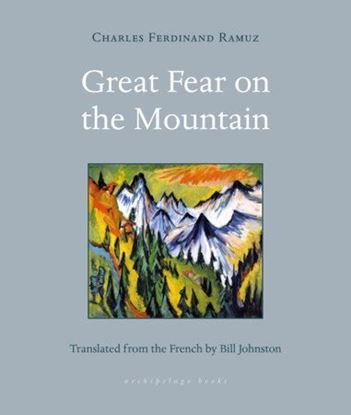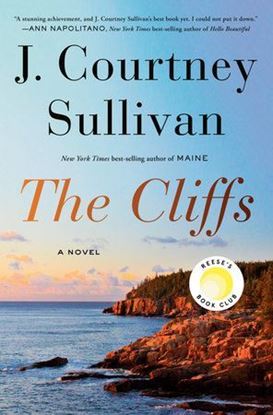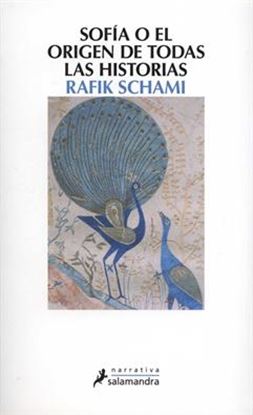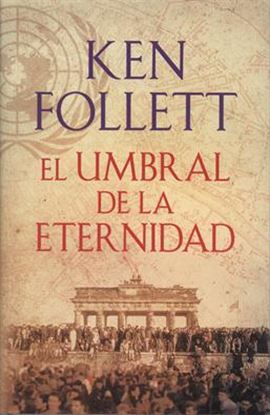

GREAT FEAR ON THE MOUNTAIN
Teeming with tension, this immersive, rhapsodic story transports readers to the Swiss mountainside, bringing to mind the writing of Thomas Mann while offering character studies as vivid and bracing as Eudora Welty’s.
Feed is running low in a rural village in Switzerland. The town council meets to decide whether or not to ascend a chimerical mountain in order to access the open pastures that have enough grass to “feed seventy animals all summer long.” The elders of the town protest, warning of the dangers and the dreadful lore that enfolds the mountain passageways like thick fog.
They’ve seen it all before, reckoning with the loss of animals and men who have tried to reach the pastures nearly twenty years ago. The younger men don’t listen, making plans to set off on their journey despite all warnings. Strange things happen. Spirits wrestle with headstrong young men. As the terror of life on the mountain builds, Ramuz’s writing captures the rural dialog and mindsets of the men.
One of the most talented translators working today, Bill Johnston captures the careful and sublime twists and turns of the original in his breathtaking translation.
1,500
1,200
THE CLIFFS
On a secluded bluff overlooking the ocean sits a Victorian house, lavender with gingerbread trim, a home that contains a century’s worth of secrets. By the time Jane Flanagan discovers the house as a teenager, it has long been abandoned. The place is an irresistible mystery to Jane. There are still clothes in the closets, marbles rolling across the floors, and dishes in the cupboards, even though no one has set foot there in decades. The house becomes a hideaway for Jane, a place to escape her volatile mother.
Twenty years later, now a Harvard archivist, she returns home to Maine following a terrible mistake that threatens both her career and her marriage. Jane is horrified to find the Victorian is now barely recognizable. The new owner, Genevieve, a summer person from Beacon Hill, has gutted it, transforming the house into a glossy white monstrosity straight out of a shelter magazine. Strangely, Genevieve is convinced that the house is haunted—perhaps the product of something troubling Genevieve herself has done. She hires Jane to research the history of the place and the women who lived there. The story Jane uncovers—of lovers lost at sea, romantic longing, shattering loss, artistic awakening, historical artifacts stolen and sold, and the long shadow of colonialism—is even older than Maine itself.
1,500
1,200
SOFIA O EL ORIGEN DE TODAS LAS HISTORIAS
Que la vida es un constante alejarse y regresar a aquellos años tempranos en los que la conciencia es incapaz de abarcar toda la complejidad del mundo lo corrobora la rica trayectoria literaria del escritor alemán de origen sirio Rafik Schami. Nacido en Damasco y exiliado desde hace más de cuarenta años en Alemania, donde se ha granjeado una enorme legión de fieles lectores, Schami ha sabido utilizar como pocos la fuerza evocadora de los recuerdos para plasmar con maestría los ásperos contornos del presente. Como ya hizo en El lado oscuro del amor y El secreto del calígrafo, Schami dibuja un colorido retrato de la convivencia de judíos, cristianos y musulmanes por las calles del Damasco de su juventud, recreando escenas, olores y sabores de una ciudad viva y radiante, en la que la legendaria hospitalidad del pueblo sirio contrastaba con la ciega brutalidad del sistema, que ya exhibía sus mortíferas garras. Instalado en Roma, casado con una farmacóloga italiana y padre de un niño, Salman, álter ego de Schami, regresa a su país empujado por la añoranza. Pero el emocionante reencuentro con la familia y los amigos, y los paseos por los barrios de su infancia, por los zocos y los cafés de su juventud, enmascaran una realidad amenazante. Los acontecimientos se precipitarán y el azaroso encuentro de Salman con el septuagenario Karim, antiguo gran amor de Sofía, su madre, le dejará una lección inolvidable para el resto de sus días. Singular mezcla de la vivacidad de los cuentos orientales con el rigor formal de la prosa europea, el estilo de Rafik Schami nos ofrece una singular perspectiva de una sociedad tan lejana y próxima a la vez. Basculando entre la bondad y la maldad, el amor y el odio, la lealtad y la traición, esta novela es un oportuno recordatorio de que el entendimiento y la reconciliación entre todos los seres humanos es un sueño realizable.
1,500
1,200
EL AMOR EN LOS TIEMPOS DEL COLERA (TD)
La historia de amor entre Fermina Daza y Florentino Ariza, en el escenario de un pueblecito portuario del Caribe y a lo largo de más de sesenta años, podría parecer un melodrama de amantes contrariados que al final vencen por la gracia del tiempo y la fuerza de sus propios sentimientos, ya que García Márquez se complace en utilizar los más clásicos recursos de los folletines tradiciones. Pero este tiempo -por una vez sucesivo, y no circular-, este escenario y estos personajes son como una mezcla tropical de plantas y arcilla que la mano del maestro moldea y con las que fantasea a su placer, para al final ir a desembocar en los territorios del mito y la leyenda. Los jugos, olores y sabores del trópico alimentan una prosa alucinatoria que en esta ocasión llega al puerto oscilante del final feliz.
«Era inevitable: el olor de las almendras amargas le recordaba siempre el destino de los amores contrariados. El doctor Juvenal Urbino lo percibió desde que entró en la casa todavía en penumbras, adonde había acudido de urgencia a ocuparse de un caso que para él había dejado de ser urgente desde hacía muchos años. El refugiado antillano Jeremiah de Saint-Amour, inválido de guerra, fotógrafo de niños y su adversario de ajedrez más compasivo, se había puesto a salvo de los tormentos de la memoria con un sahumerio de cianuro de oro.
Encontró el cadáver cubierto con una manta en el catre de campaña donde había dormido siempre, cerca de un taburete con la cubeta que había servido para vaporizar el veneno.»
1,500
1,200
EL UMBRAL DE LA ETERNIDAD (TD) (CENT 3)
Después de La caída de los gigantes y El invierno del mundo llega el final de la gran historia de las cinco familias cuyas vidas se han entrelazado a través del siglo XX. La familia estadounidense, la alemana, la rusa, la inglesa y la galesa participan en los acontecimientos sociales y políticos que marcaron las agitadas décadas de los sesenta a los noventa, y son testigos de ellos.
Desde el sur de Estados Unidos hasta la remota Siberia, desde la isla de Cuba hasta el vibrante Londres de los años sesenta. El umbral de la eternidad es la historia de aquellas personas que lucharon por la libertad individual en medio del conflicto titánico entre los dos países más poderosos jamás conocidos.
«Esta es la historia de mis abuelos y de los vuestros, de nuestros padres y de nuestras propias vidas. De alguna forma es la historia de todos nosotros.» Ken Follett
1,500
1,200
MEJOR HOY QUE MAÑANA
Mejor hoy que mañana narra el devenir de una familia mixta de un barrio de Johannesburgo desde los años noventa hasta finales del 2009. Terminado el apartheid, la mayoría de ciudadanos no han visto cumplidas sus esperanzas de un mundo mejor: la democracia y la abolición de la segregación racial no han hecho brotar lo mejor de cada persona, sino que, por el contrario, la corrupción y las desigualdades sociales se han convertido en el nuevo caballo de batalla del país. Sin embargo, la esperanza y la seguridad de que puede construirse un mundo mejor se abren siempre paso entre las líneas de esta novela, la más reciente de una escritora excepcional.
1,500
1,200














